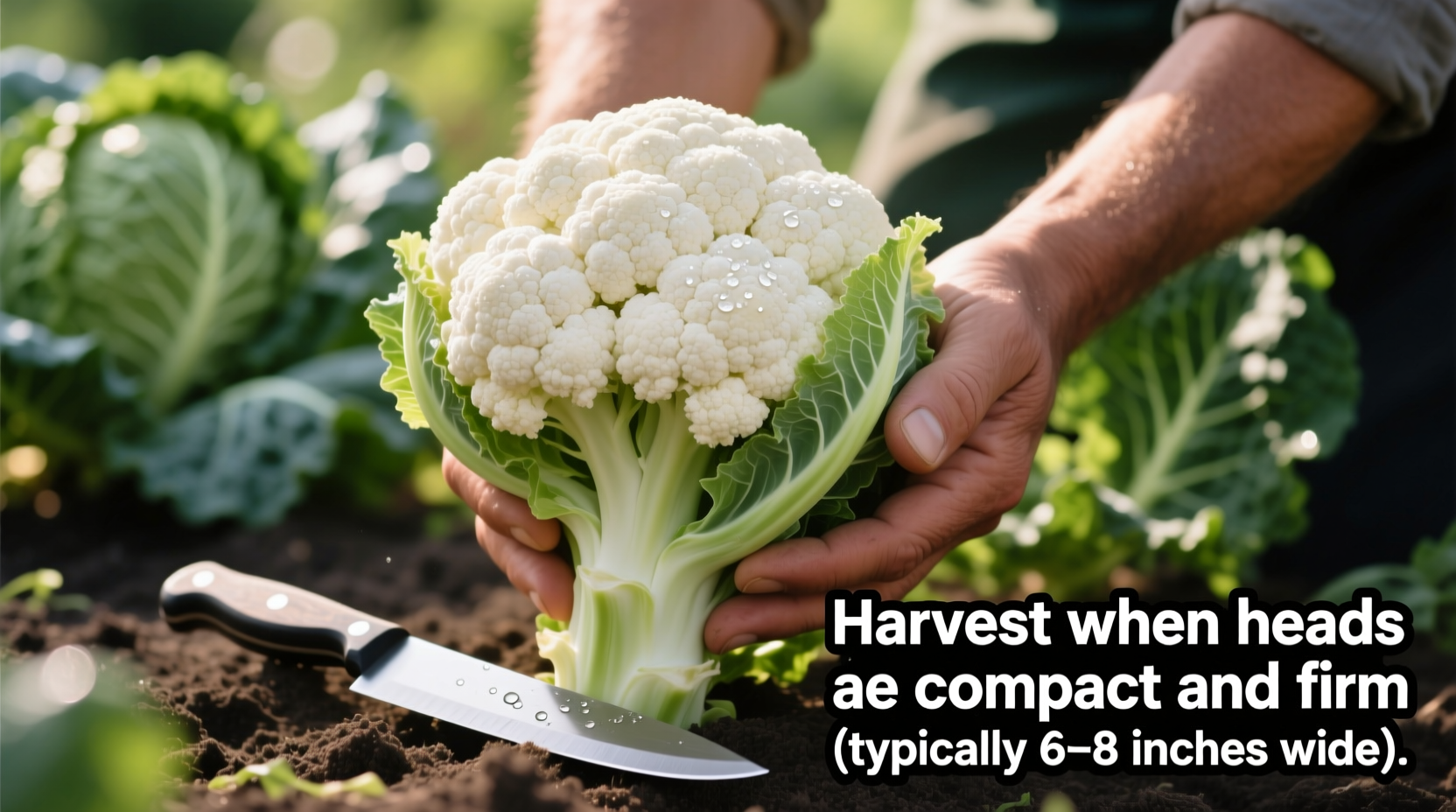Knowing exactly how to harvest cauliflower makes the difference between crisp, fresh florets and disappointing, overgrown heads. Whether you're harvesting your first home garden crop or refining your technique, this guide delivers the precise timing, tools, and techniques that ensure peak flavor and maximum yield.
Recognizing Perfect Harvest Timing
Timing is everything when it comes to harvesting cauliflower properly. Unlike some vegetables with flexible harvest windows, cauliflower demands precision. The ideal harvest window lasts just 1-3 days before quality declines.
Look for these visual indicators that signal your cauliflower is ready for cauliflower harvesting:
- Firmness test - Gently squeeze the head; it should feel solid with no give
- Size measurement - Most varieties reach optimal size between 6-8 inches in diameter
- Curd integrity - Individual florets should remain tightly packed without separation
- Color consistency - Pure white varieties should show no yellowing or browning
According to the USDA Agricultural Research Service, cauliflower heads that show even slight separation between curds have passed their peak quality stage and will develop grainy texture within 24-48 hours (USDA ARS).
| Variety Type | Days to Maturity | Optimal Head Size | Special Harvest Considerations |
|---|---|---|---|
| Traditional White | 55-75 days | 6-8 inches | Blanch leaves when head first forms |
| Orange & Purple | 60-80 days | 5-7 inches | No blanching needed; color intensifies after harvest |
| Self-Blanching | 65-85 days | 5-6 inches | Natural leaf cover protects head; check under leaves |
Essential Harvesting Tools and Preparation
Having the right equipment ready before you begin how to harvest cauliflower prevents damage to both the plant and your harvest. Professional growers recommend gathering these items:
- Sharp, clean harvesting knife (8-10 inch blade)
- Garden gloves to protect hands from rough leaves
- Sturdy harvesting basket lined with damp cloth
- Pruning shears for removing outer leaves
- Cooler with ice packs if harvesting in warm weather
Timing your harvest for early morning provides the crispest heads with highest moisture content. The University of California Cooperative Extension confirms that morning-harvested cauliflower maintains 15-20% better moisture retention compared to afternoon harvests (UCCE).

Step-by-Step Harvesting Technique
Follow this precise method for harvesting cauliflower without damaging the plant:
- Inspect the head - Check for firmness and proper size, parting leaves gently if needed
- Prepare the cutting area - Remove any yellowing outer leaves that might interfere
- Position your knife - Place blade 1-2 inches below the head at a 45-degree angle
- Make a clean cut - Use a single downward motion to avoid crushing the stem
- Handle with care - Support the head immediately after cutting to prevent bruising
- Check for secondary heads - Some varieties produce smaller side shoots after main harvest
Avoid twisting or pulling the head from the plant, as this damages the vascular system and prevents potential secondary harvests. The 45-degree cutting angle allows water to run off the remaining stem, preventing rot in the plant base.
Post-Harvest Handling for Maximum Freshness
What you do immediately after harvesting cauliflower determines how long it stays fresh. Follow these professional handling steps:
- Cool immediately - Place harvested heads in shade or cooler within 15 minutes
- Remove excess leaves - Trim all but 2-3 inches of stem and outer leaves
- Avoid washing - Moisture accelerates spoilage; wash only before preparation
- Store at proper temperature - Ideal storage is 32°F with 95% humidity
- Use within 2 weeks - Freshly harvested cauliflower maintains best quality for 10-14 days
Commercial growers use hydrocooling (immersing in chilled water) to rapidly reduce field heat, but home gardeners can achieve similar results by placing harvested heads in a refrigerator with a damp cloth for the first 24 hours.
Avoiding Common Harvesting Mistakes
Even experienced gardeners make these cauliflower harvesting errors that compromise quality:
- Waiting too long - Heads become loose, grainy, and develop off-flavors
- Harvesting in wet conditions - Increases risk of mold and bacterial growth
- Cutting too close to the head - Leaves insufficient stem for handling and storage
- Leaving cut heads in sun - Causes rapid moisture loss and quality degradation
- Storing with ethylene-producing fruits - Apples and bananas accelerate yellowing
Research from Cornell University's Vegetable Program shows that cauliflower heads left on the plant beyond peak maturity lose 30% of their vitamin C content within 48 hours (Cornell CALS).
Extending Your Harvest Season
Unlike many vegetables, cauliflower doesn't continue ripening after harvest. However, you can extend your fresh harvest period through these techniques:
- Succession planting - Sow new seeds every 2-3 weeks for continuous harvest
- Variety selection - Choose early, mid, and late-season varieties
- Temperature management - Use shade cloth during heat waves to prevent premature bolting
- Cold protection - Cover plants with row covers when temperatures drop below 40°F
Some modern varieties like 'Graffiti' purple cauliflower and 'Cheddar' orange types actually develop more intense color after harvest when exposed to light, creating visually striking dishes with enhanced nutritional profiles.











 浙公网安备
33010002000092号
浙公网安备
33010002000092号 浙B2-20120091-4
浙B2-20120091-4